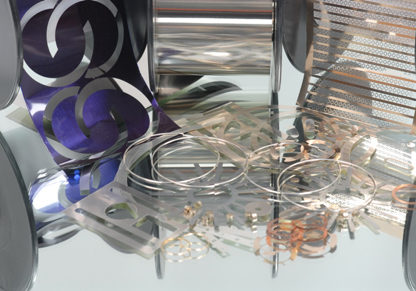Active Braze Alloys
How it All Started
Like many other innovations in science, the process of active brazing was reportedly discovered by accident. During brazing trials an alloy containing a small amount of zirconium inadvertently flowed onto an alumina fixture during the more commonly used molybdenum manganese metallization method. To the surprise of the engineer, the alloy wet and bonded to the ceramic. The zirconium was acting as the active element which allowed the braze alloy to wet the ceramic. This realisation has changed the way we join ceramics today.
When to use Active Brazing
Active brazing is used when conventional brazing will not work. This is typically with ceramic materials such as alumina, silicon carbide, sapphire, diamond and graphite. Previously this type of material could only be brazed using the molybdenum manganese process whereby the surface of the components is metallized to prepare them for brazing in the standard manner.
While the Mo-Mn process is well established and widely used in some industries there are certain disadvantages to it. These include the high cost and the fact that it is a time consuming multiple stage process. This makes it unsuitable for small batches or development work.
Active brazing on the other hand is a straightforward single stage process. It uses braze alloy in foil, paste, wire or preforms to join ceramic to ceramic or frequently ceramic to metal usually in a vacuum furnace. It forms a strong joint where the parent material usually fails before the braze joint.
So how does it work?
Many of the materials joined using active braze alloys are oxides or carbides. Usually we are told that oxides must be removed before wetting can occur. In the case of active braze alloys however a reaction takes place between the active element within the filler metal, usually titanium and the oxides, carbides or nitrides. This forms titanium oxide, titanium carbide or titanium nitride which allows the filler metal to wet the surface of the ceramic. Titanium is the most commonly used active element in commercially available braze alloys, though others such as hafnium, vanadium, zirconium and chromium are also active elements to a greater or lesser degree. The nature of the intermetallic layer formed because of this reaction is determined by the concentration of the active element and the time/temperature parameters of the brazing cycle. The incorrect cycle or alloy can result in a brittle intermetallic layer in the braze joint hence careful selection of both is critical.
What kinds of Active Braze Alloys are available?
There is an array of commercially available active braze alloys with brazing temperatures ranging from 700⁰C to over 1050⁰C. The compositions range from less than 1% active element, though 1%-4% is more typical. The majority of the alloys are silver and copper based but gold and nickel also feature strongly. Indium is used in some alloys to reduce the brazing temperature of the alloy. There is a suitable alloy for every application
What type of atmosphere is used?
As mentioned in a previous article the brazing atmosphere is crucial in achieving a sound joint. Active brazing is best carried out in a vacuum where any oxygen is excluded to prevent the active element reacting prematurely with air. Brazing in an inert atmosphere is also possible as long as the components being brazed are completely purged of air. Remember both oxygen and nitrogen will react readily with titanium and therefore nitrogen, which is often used as a shielding gas, must not be used with titanium containing active braze alloys.
Ceramics to Metals
Applications for active brazing often require that a ceramic is brazed to a metal rather than another ceramic. This has implications related to the difference in coefficients of thermal expansion of the different materials. Ceramics are generally brittle with low CTE compared to the metals they are joined to. This makes cracking of the ceramics a distinct possibility during the cooling stage of the braze cycle. Careful selection of the braze filler metal and design considerations can help mitigate against this.
Metal to Metal
Of course active braze alloys are also very useful in brazing metals, most notably stainless steels. The property that makes stainless steel corrosion resistant is the chromium oxide layer which protects it. This oxide layer is easily dealt with by the active braze alloy. Active brazing alloys also permit effective wetting of stainless steels and refractory materials such as tungsten carbide.

